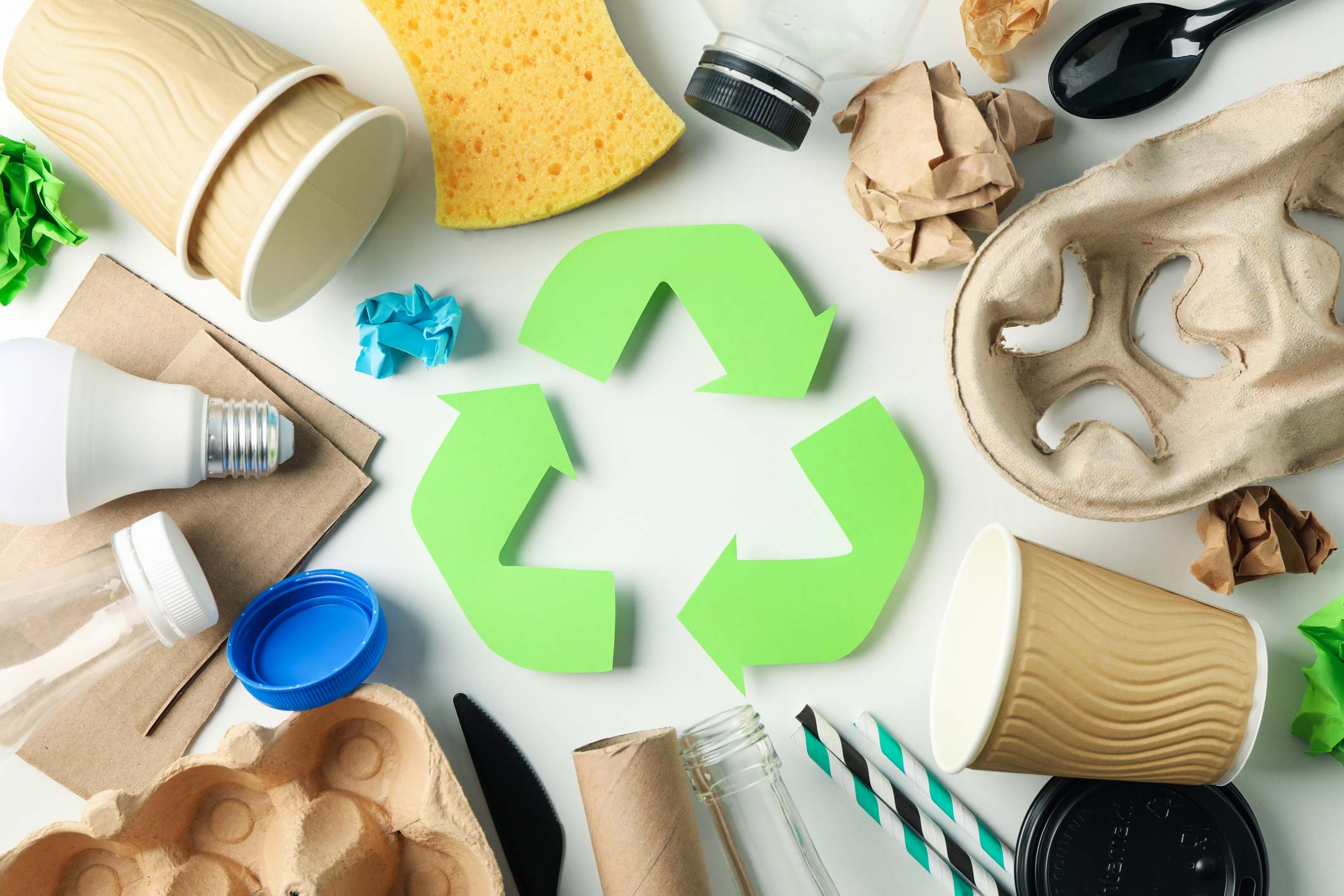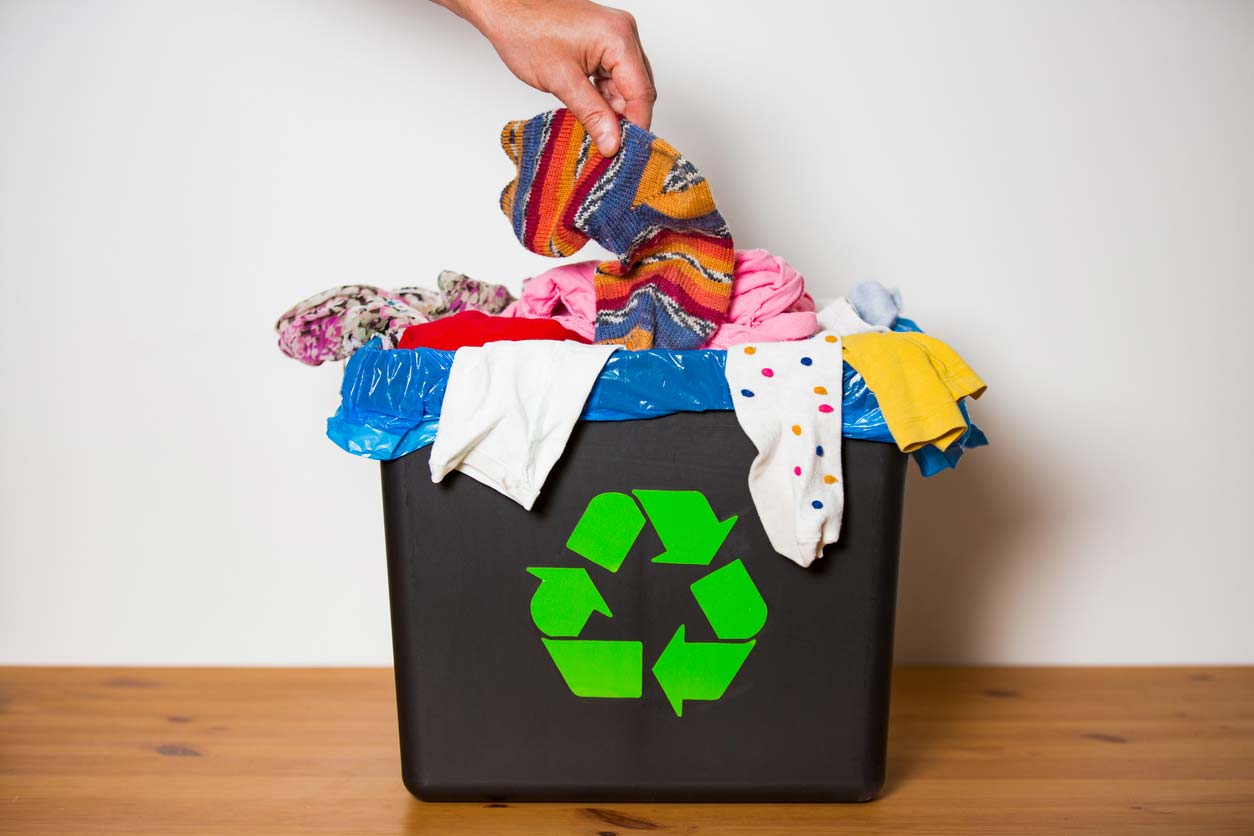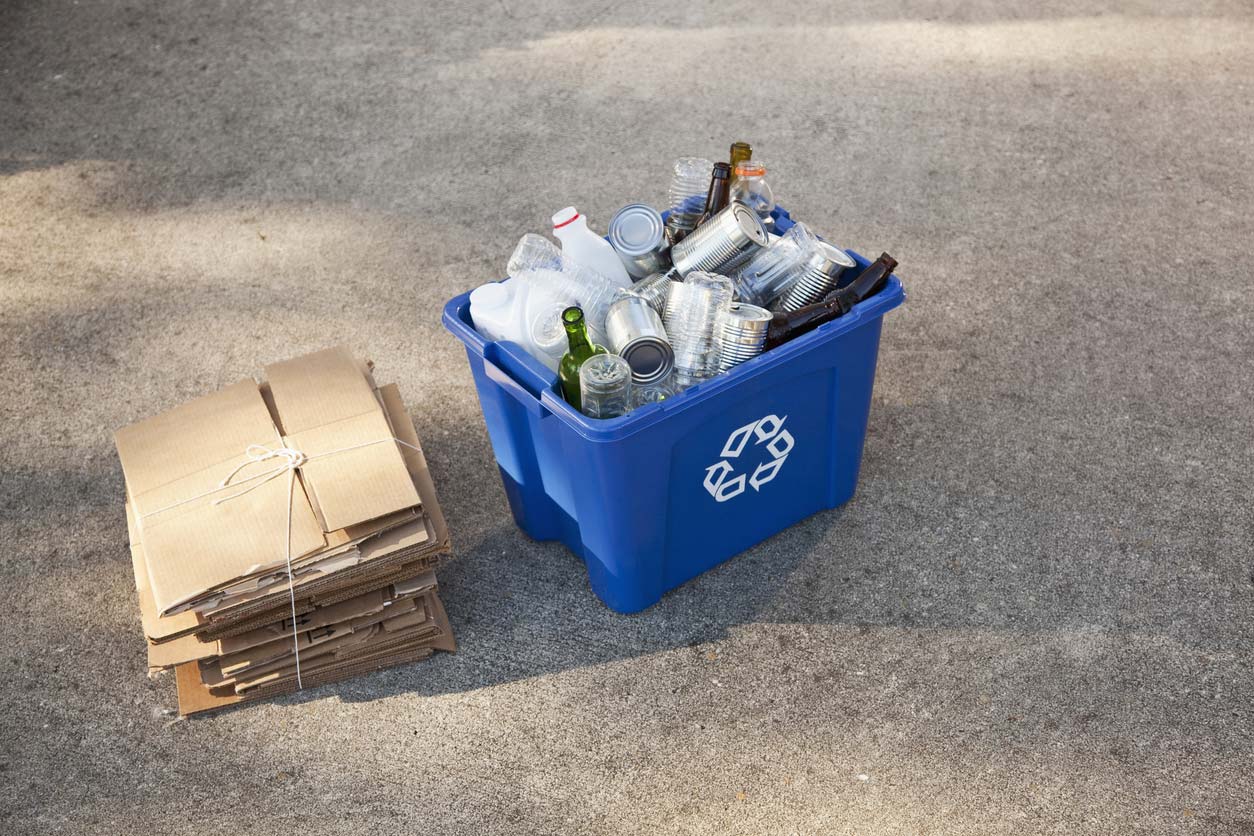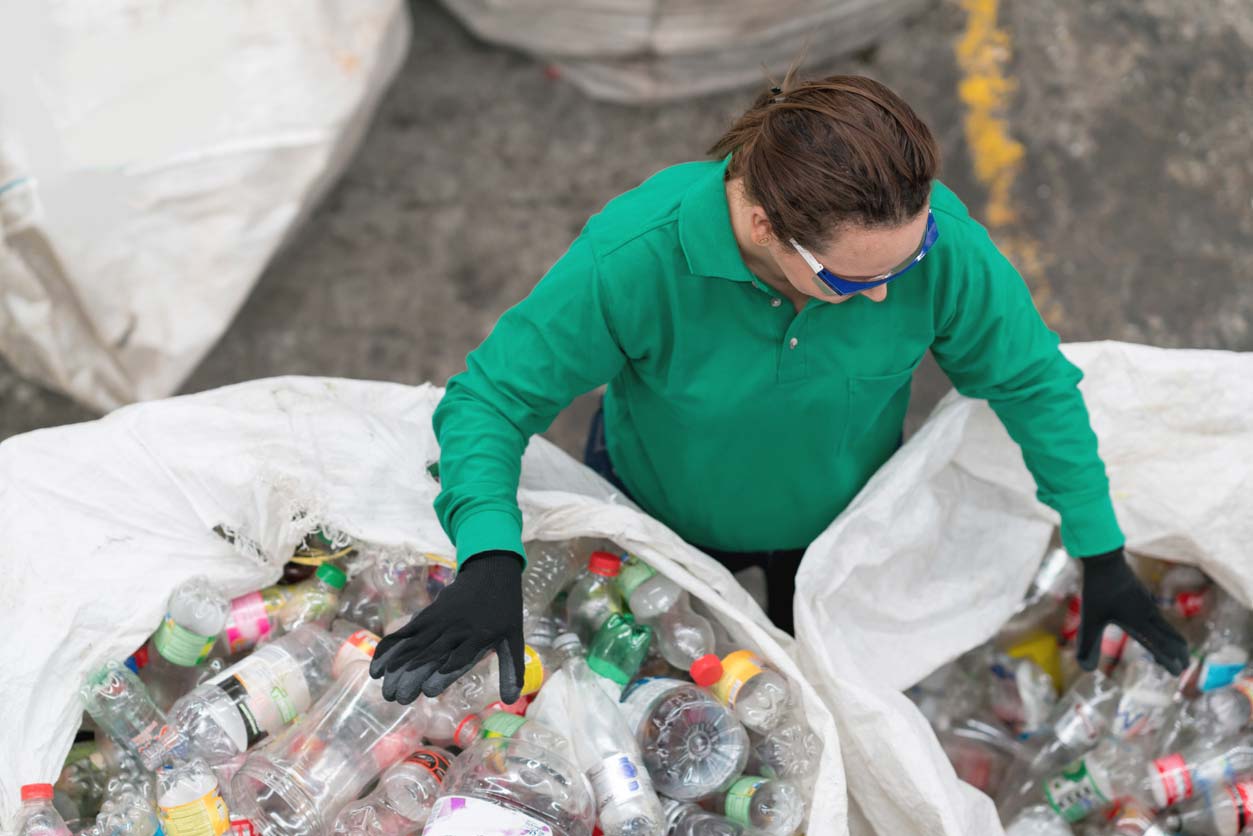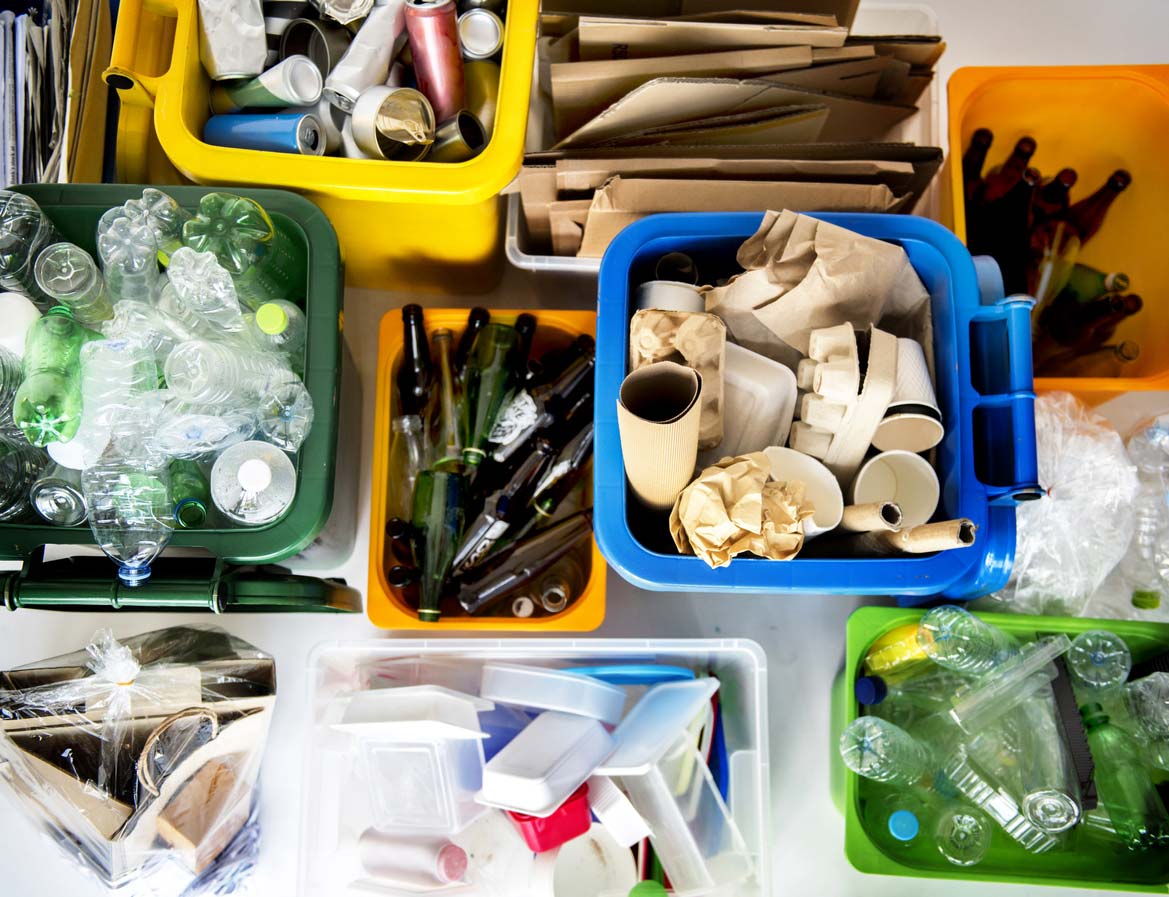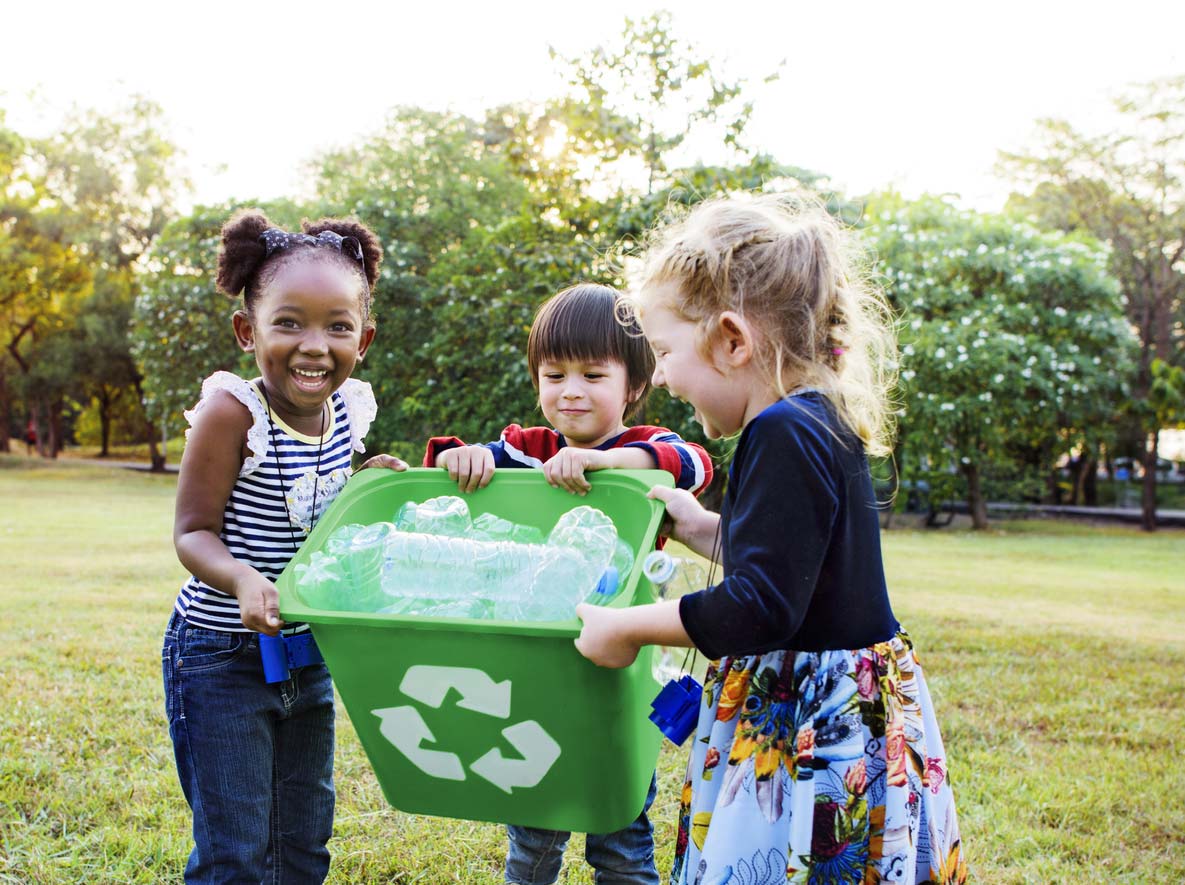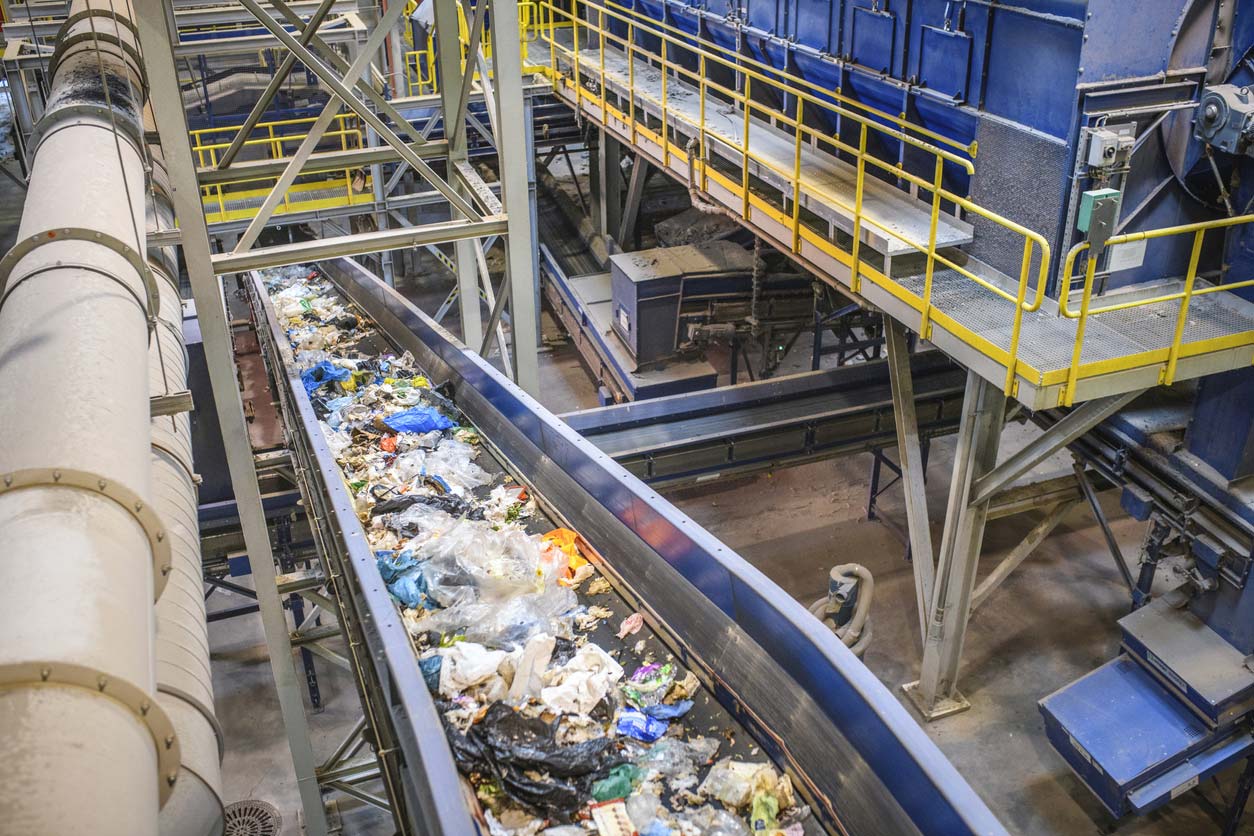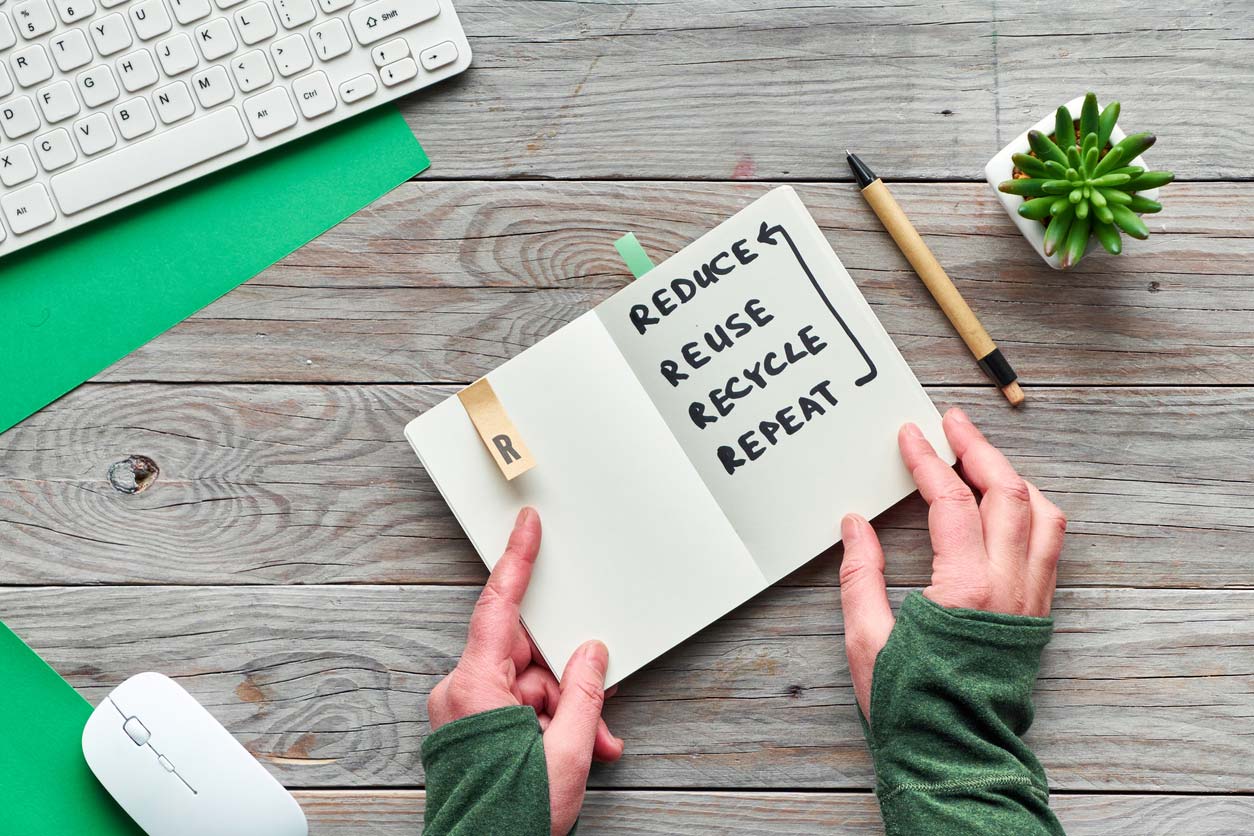At its core, recycling turns something that’s no longer useful into something that is useful as an alternative to throwing it away. But as environmentalists remind us, there’s really no such thing as “away.” Recycling does keep trash out of landfills — and out of the oceans, rivers, and lakes. Plus, it reduces the need for new raw materials that otherwise would have to be harvested, drilled for, or mined.
And these are all very good things.
And yet, this is a hard article to write. On the one hand, I want to encourage us all to recycle as part of our collective effort to pass on a liveable planet to our children. But on the other hand, some of what passes for recycling may actually be a kind of greenwashed fraud, allowing us to feel better about ourselves while we continue to trash the planet.
Recycling is good because it keeps billions of glass bottles and aluminum cans out of landfills. But some of what we call recycling isn’t all that great because it’s not what we might wish it was. And some of the things we put in the recycling bin still may end up in landfills or, even worse, in the ocean.
So while recycling is a rational solution to the problem of overflowing landfills, it can also be a cynical attempt to shift the burden of an out-of-control waste stream from corporate manufacturers of single-use plastics and metals onto individual consumers.
Oh, dear. Looks like I’ve got my work cut out for me! So let me tell you my goal in this article. I want to demystify recycling so that you participate in the effort to the best of your ability. AND I want to educate you about the flaws and limitations of recycling, at least as it’s currently being practiced, so you make more meaningful contributions to our planet’s health, such as reducing your demand for single-use items and taking better care of the things you already have.
Humans are Natural Recyclers
The good news is, recycling wasn’t some hippie scheme invented in the 1960s. Rather, human beings have been recycling for hundreds of thousands of years. Not for environmental reasons, but as an economic necessity. Every artifact of human civilization — pottery, stone tools, textiles, metal implements — took a lot of effort to extract from the earth and fabricate into a useful form. It just made sense to reuse a broken spearhead as a cutting knife or turn worn clothing into rags for cleaning or sacks for storage.
Even as late as the 19th and early-20th centuries, most people recycled fabrics to stretch their household budgets. An out-of-style dress went back to the tailor or seamstress to be taken in or up, let out, or restyled with additional buttons or cuffs. A shift with worn elbows might be converted to a short-sleeve shirt, or receive patches, or have new sleeves sewn on. When the garment was beyond saving, frugal homemakers cut it up for quilt squares, or rag rugs — or just plain rags.
Back in the day, objects were made to last simply because most people couldn’t afford to keep buying new ones. Before massive factories, automation, global commerce, and the invention of cheap and easy to produce modern ingredients like plastic and other polymers, stuff was heard-earned and expensive. It just made sense to keep it in good condition for as long as you could — and put it to as many subsequent uses as possible after it could no longer fulfill its original purpose.
But as the world changed, and as it became cheaper to package and transport beverages in throwaway plastic than in reusable glass bottles, suddenly it made economic sense to send our garbage to landfills after a single-use.
Modern Recycling
During times of economic stress and scarcity, however, our recycling instincts have kicked back in. During World War II, for example, governmental public service campaigns encouraged Americans to support the war effort by recycling rags, scrap metal, and old rubber. But once victory was assured, and curbside garbage pickup began in many American cities, it became easier than ever to toss and forget about the waste products of our increasingly industrialized lives.
Nevertheless, a return to recycling did occur once again. By the 1960s, with the counterculture in full swing, Rachel Carson’s Silent Spring galvanized the environmental movement in the US and many other nations. With its focus on individual responsibility for a green planet, the movement embraced recycling once again, although, to give credit, as only the third-best option. The popular “3 R’s” slogan, “Reduce, Reuse, Recycle,” highlighted the importance of consuming less, repurposing high-value items into those of lower value, and only then separating paper, plastic, metal, and glass from ordinary household trash.
How Recycling Went Wrong
Unfortunately, modern recycling can sometimes be inconvenient and complicated. The recycling infrastructure in the US, in particular, makes it hard for consumers to know what to do, or even how to do it. With seven grades of single-use plastics, and each recycling plant having its own rules, requirements, and limitations, the responsibility for solving our ballooning waste stream fell squarely on overburdened and confused consumers. Which plastics could be recycled? How should they be cleaned? Do you have to remove the glued-on labels? And how do you separate them?
Perhaps even worse, some recycling programs turned out to be, not to put too fine a point on it, a fraud. For decades, China imported just under 50% of the world’s recyclables, which it used to supply its growing manufacturing base. The problem was, almost a third of these materials could not be reused and so ended up in landfills, polluting the countryside, or dumped in oceans. In 2018, China imposed an import ban on plastics and other materials that didn’t meet new, higher standards, leaving much of the world without a convenient recycling option.
This presented a huge problem for the recyclers of the world. Many consumers had gotten used to conveniently tossing everything recyclable, or even everything that might possibly be recyclable, into one recycling bin, thinking that solved the problem. But once China stopped taking half the world’s recyclable materials, processing facilities began struggling to find markets for the goods.
Some overwhelmed US processing facilities and municipalities began to cut back on their recycling programs, increasing the burden on consumers and leading to declining participation.
As news spread about the world’s recycling problem, with exposés being published in major international news outlets, some people grew disillusioned and stopped recycling altogether.
But for all its flaws and unfulfilled promises, some types of recycling programs still do make a lot of sense, both environmentally and financially. So throughout the rest of this article, I want to share how recycling works now. And I want to help you figure out what exactly you can recycle based on the programs that are available where you live.
After all, the more we can scale recycling, the more sense it makes as at least a partial response to the environmental havoc our throwaway society creates.
How Recycling Works
The US Environmental Protection Agency (EPA) lists three steps in the recycling process, each with its own challenges. First, recyclable materials generated by a consumer or business have to be collected by a private hauler or government entity and transported to a processing facility.
Second, the processing facility, whether a paper processor or a materials recovery facility, must sort, remove contaminants from, and prepare the material for transport to a milling facility or some other manufacturing plant.
Depending on what’s being recycled, different steps are needed. Glass can be ground and re-melted in a fairly straightforward process, while plastic is more complicated. Plastics must be sorted according to type, and then cleaned, with all stickers and glue removed, before they can be processed into mill-ready forms. The journey of recycled paper varies, depending on the length of the fibers (which is a function of how many times it’s been recycled already), the saturation of the ink, and what grade the paper is going to be next.
Here’s a video documenting the journey of different types of recyclables in the Sims Municipal Recycling facility in Brooklyn, New York, which handles most recycling for New York City.
The third step is remanufacturing. After all required processing is complete, the recyclables are made into new products, either at the recycling plant itself or in a dedicated manufacturing facility, such as a paper mill or bottle making plant.
One of the challenges is that while recycling is a public good, it’s also a business. Although we would wish it otherwise, it’s a fact that recyclables aren’t automatically turned back into packaging, newsprint, and other products. Remanufacturing occurs only once the processing facility finds a buyer who’s willing to pay for the sorted raw materials.
How to Recycle Different Materials
The recycling industry today is a hodge-podge of systems, technologies, and incentives. There’s no national or international standard for recycling, the way there is, say, for mailing a letter from a post office. Each location has its own rules, requirements, exclusions, and specifications for what you can and can’t recycle, how to prepare them, and whether and how to separate them. So please consider the guidelines I’m about to share as general information. And check with your city or county’s Public Works Department for the brass tacks (including whether they recycle brass tacks).
Paper
The following kinds of paper are generally ok to recycle:
- Newspaper
- White and colored office paper
- Cardboard
- Computer paper
- Magazines
- Catalogs
- Phone books (remember those?)
Paper that isn’t typically recyclable includes:
- Coated and treated paper (like wax paper)
- Paper covered in food waste (pizza boxes sporting grease stains are a classic example)
- Frozen food boxes
- Paper cups
- Paper towels
- Paper laminated with plastic (like some takeout containers)
Don’t worry about removing staples from paper. Modern paper recycling facilities use magnets to remove them before the paper is remilled. Save the paper clips if you can so you can reuse them. But don’t sweat it if they slip past you into the recycle bin. They won’t mess up or slow down the works at the paper recycling facility.
When recycled, paper can generally be repurposed into new paper, although with each run, the fibers get shorter. So there are limits to how many times paper can reincarnate.
Plastic
The big question is, what kind of plastic? Every piece of single-use plastic is stamped with a number that corresponds to its chemical makeup. In general, types 1 and 2 are recyclable, and types 3 through 7 are not. But this really does vary from place to place and even sometimes from month to month. For details on each type, where they’re used, and how benign or toxic they are, check out this detailed resource. And go here if you want to take a graphical tour of plastic and its possible afterlife.
Keep in mind, most plastics aren’t actually recycled, so much as “down-cycled” into things like carpet, fleece clothing, or decking material.
Glass
Most facilities are happy to process container glass: beer and wine bottles, tomato sauce jars, and so on. But they are generally not equipped to handle window glass, light bulbs, mirrors, or glassware — all types of glass coated with chemicals to enhance durability. If you have large amounts of window glass, you might need to contract with a local construction and demolition (C&D) recycler. For all glass, try to keep it intact to protect you and the workers at the recycling facility from cuts.
Fortunately, glass bottles can often be truly recycled and turned into other glass bottles of comparable quality.
Metal
Metal cans, whether made of steel or aluminum, are the poster children for the benefits of recycling. Aluminum is sourced from bauxite, which consists of alumina and a bunch of iron oxides. It takes a huge amount of energy to get a single ton of aluminum out of four tons of bauxite. And unlike paper, aluminum doesn’t change or degrade from life to life. So making a soda can from recycled aluminum cans uses about one-twentieth the energy of creating one from freshly mined aluminum.
Steel cans are also recycling superstars. Making new steel from iron ore takes a lot of energy, and steel also retains its desirable properties no matter how many different things it’s been. Yesterday’s pinto bean can may very well be tomorrow’s paper clip, bridge cable, or bicycle frame.
Some municipal facilities also recycle scrap metal from things like major appliances, old fencing, worn-out pipes, and wiring. Depending on the material, you might even get paid for some of this stuff. Copper, in particular, can fetch some decent money due to its value, and the cost of mining it from the earth.
Hazardous Waste Materials
At some point, you may want to get rid of what are known as “hard to dispose of” items — those things that may be hard to recycle and aren’t allowed in a municipal or county waste stream. This can include stuff like batteries, old electronics, paint products, compact fluorescent light bulbs, medical sharps (syringes, needles, and lancets), swimming pool chemicals, garden pesticides and herbicides, strong household cleaners, and many automotive products.
Some local landfills or recycling centers have special “hazardous waste days.” In other areas, you’ll have to pay a private firm to cart away your “untossables.”
Some municipalities accept used batteries at their recycling facilities, while others allow you to toss them into your regular trash stream. Most are recyclable, however, so if you can’t easily recycle them in your community, you may want to look into alternative drop-off programs or recycle by mail options. And of course, any time you can use rechargeable batteries, which are getting better all the time, they’re preferable to single-use batteries.
Motor Oil
If you change the oil on your vehicles or motorized lawn care equipment, you should make every effort to recycle it rather than throwing it out. Oil in the trash stream is a major source of soil contamination. And besides, used oil is still oil and doesn’t degrade or wear out; it just gets dirty. So recycling can remove the dirt and restore the oil to a useful state.
For comparison, it takes 42 gallons of crude oil, extracted from the earth, to make two and a half quarts of engine lubricating oil. You can get the same two and a half quarts from a single gallon of used motor oil. That’s a no-brainer environmentally speaking!
If your municipal recycling facility can’t handle used oil, check with local auto shops which will often gladly add your used oil to their own stock, which they may donate or sell to businesses that make money producing new motor oil from used.
Tires
Old tires can be given new life in a bunch of creative ways. Some are shredded and used to provide cushioning on artificial turf fields. Others are repurposed into playground equipment. Some are burned for fuel, while others are used in green building construction.
If these uses aren’t enough to convince you to recycle those old tires, consider the consequences of not recycling. Americans go through about 300 million tires per year. When they end up in landfills, their shape traps water that becomes a breeding paradise for rodents and mosquitoes. They use up a lot of landfill space, trap methane, and can catch fire. And tire fires are no fun to extinguish!
Here’s an interactive tire recycling locator. If you’re in the US, you can just input your zip code, and you’ll get a list of locations that will let you drop off your used tires for recycling.
Tetra Pak containers
Some locales allow you to recycle Tetra Pak food cartons, like those used for orange juice, non-dairy milk, and some shelf-stable products like cooked beans, silken tofu, and even some brands of “boxed” water. If there are no drop-off or pickup programs in your area, you may be able to find a mail-in program via this service from the Carton Council.
Benefits of Recycling
We’ve already looked at some of the key benefits of recycling. The most obvious is that less waste ends up in smelly, ugly, and toxic landfills that pollute the air, water, and soil in their vicinity. The chemicals that result when garbage sits around in the sun or in covered pits is known as leachate. This creates huge amounts of pollution and can make nearby land unlivable and unfarmable. While theoretically, most modern landfills are sealed using clay caps or plastic sheeting, some leachate may escape. And any amount of it is too much.
At the other end of the cycle, using materials again means that we extract fewer natural resources from the Earth. Less deforestation for paper pulp allows for more trees and healthier, more diverse forests. Giving plastic a second or third life reduces the need to drill for petroleum to turn into plastic.
And often, recycling takes less energy than original manufacture. While this isn’t the case in all situations, there are some clearly positive use-cases. Recycled steel saves 60% of the energy compared to new; recycled newsprint uses 40% less energy, as does recycled glass; and recycled plastic saves a whopping 70%. And as we’ve seen, aluminum wins the gold medal by reducing energy expenditures by 95%.
Finally, recycling can create clean, green jobs at the local level. Consider the difference between incinerating, landfilling, or recycling 10,000 tons of waste. Incinerating creates a single job. Landfilling employs six people. And recycling requires 36 workers. According to the National Recycling Coalition, recycling in the US is a $236 billion industry employing over one million people and generating $37 billion in annual payroll.
Challenges with Recycling
But as I’ve said, along with these significant benefits come serious challenges with recycling. For example, there is the contamination caused by “user error,” when consumers place items in the wrong bin, put things into the recycling that don’t belong there, or don’t wash dirty food containers. Because the rules are confusing, lots of non-recyclables end up in recycling bins: plastic straws, plastic bags, plastic utensils, takeout containers, and so on.
Recycling centers are dealing with the problem by shifting to single-stream recycling, where all recyclables go in the same bin. And by creating sorting facilities to separate it all out. This is obviously much easier for consumers who don’t have to remember all the rules and conditions. The downside is that, in total, about one-quarter of all single-stream recyclables end up contaminated and therefore unsuitable for recycling.
(For an entertaining spoof of the recycling industry’s myriad distinctions, check out this Portlandia skit.)
COVID-19’s Impact on Recycling Programs
Another event that has thrown recycling efforts for a loop has been the COVID-19 pandemic. People who used to avoid single-use plastics on environmental grounds have now come to embrace them to prevent contagion. And the billions of PPE items — like masks, gloves, and face shields — have overwhelmed our capacity to recycle them. Grocery chains have tried to minimize person-to-person exposure by banning reusable bags and returning to single-use plastic and paper bags.
Along with the giant increase in demand, the pandemic has shrunk the processing capacity of our recycling system. Some recycling centers have had to close due to COVID-19 outbreaks. And some municipalities have shifted resources away from recycling, leading to the suspension of curbside programs and business pickups.
But there is also some good news here, at least of the inspirational type. A furniture design student in South Korea launched a project to melt used polypropylene disposable masks into three-legged stools. Hopefully, this will encourage others to innovate additional solutions.
Recycling Resources
Where to recycle varies from place to place. Some municipalities offer curbside pickup, sending specialized trucks that allow for the sorting of different types of recyclables on the spot. These may be part of a city’s waste management division or contracted out to an independent recycling company. Here’s a comprehensive database to help you figure out how to recycle almost anything that can be recycled.
If you can’t find anything local, there are several mail-in programs available. Terracycle offers several free recycling programs, often available on a national level in the US. You can also find other mail-in programs to recycle common household items like light bulbs, old cell phones, and even paper and plastic. For businesses, Waste Management, LLC, offers kits that enable recycling-by-mail.
Although plastics like plastic bags and plastic wrap aren’t recyclable in typical curbside programs, you can recycle them at certain drop-off sites. Here’s a database of such locations in the US, searchable by postal code.
For businesses, Waste Management offers office recycling programs in case you can’t get hooked up by your city’s waste management division or via an independent recycling center.
Finally, you can create a recycling center in your own home by reusing glass containers for food storage (it’s much healthier than using plastic). See our article on the benefits of living plastic-free, here.
You can also repurpose everything from used paper towel roll tubes to broken stools for arts and crafts projects. Here’s a fun tutorial on how to recycle your own paper. All you’ll need is a blender and a picture frame with some old screen material (plus some free time and an adventurous spirit!).
Reducing, Reusing, & Recycling
Recycling is an important part of taking care of our planet. But it’s not without its challenges. It’s not always clear how recycling works, what can and can’t be recycled, or where you can take recyclables. So the old “Triple-R” adage is true, and it really is in the right order.
If you want to walk lightly on the earth, the first step is to reduce. Use only what you need. Second, reuse. Find ways to repurpose. Reject the cultural norm of disposable everything. “Use it up, wear it out, make it do, or do without” was a popular mantra generations ago, and many of us would do well to revive it today. And if you can’t reduce or reuse, then recycling is often the next best option.
Some waste may be an inevitable part of living in the modern world. But every step we take to reduce it is a step towards a healthier world for ourselves and future generations.
Tell us in the comments:
- What are you currently recycling? How easy or hard is it?
- Have your recycling habits changed in the past year?
- What else do you think should be done to reduce the waste problem?
Feature image: iStock.com/AtlasStudio
